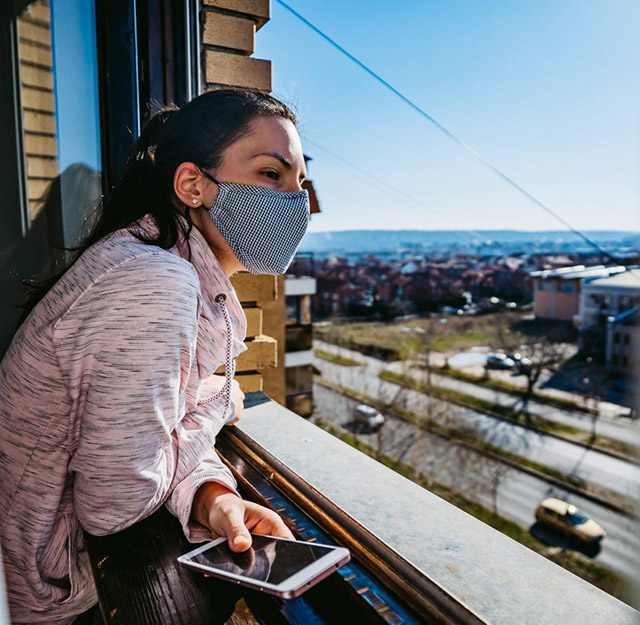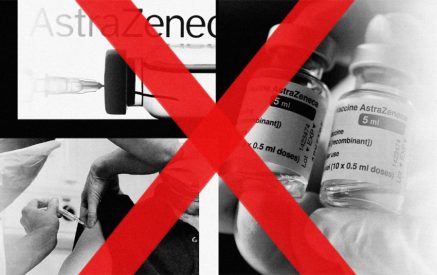The European Health Report 2021 highlights the way forward
Given the far-reaching impacts of the COVID-19 pandemic in WHO’s European Region, countries face daunting challenges in tackling health inequities and achieving the health-related Sustainable Development Goals by 2030. But a critical window of opportunity still exists if governments and health authorities take necessary actions, according to the flagship European Health Report 2021, released by the WHO Regional Office for Europe today.
Published every three years, the latest report takes stock of the Region’s progress on SDG health indicators such as universal health coverage, non-communicable diseases, and environmental health, but it also illustrates how the COVID-19 pandemic has impeded countries’ efforts to reach crucial targets.
Importantly, for the first time, the report includes a set of projections outlining health impacts across three scenarios: No strategic action is taken to get back on track; progress is accelerated and strengthened; or progress is further slowed and diluted.
Read also
“We have a stark choice at this juncture almost two years into the pandemic,” noted Dr Hans Henri P. Kluge, WHO Regional Director for Europe. “We can prioritize the health sector as never before, with an urgent focus on long-neglected issues including mental health, recognizing health systems and health workers as essential pillars of socioeconomic recovery and key to preparing for future shocks. Or we can lose the chance we have, jeopardizing the health and wellbeing of citizens, undermining the health security of individual countries and indeed our entire Region. The choice is obvious.”
The report reveals that:
- All countries in the WHO European Region have met the SDG target for maternal mortality of less than 70 per 100,000 live births by 2030. The Region’s average rate is at 13 per 100,000 live births, as of 2017.
- Almost all countries in the WHO European Region have met the SDG target for newborn and child mortality rate of less than 12 and 25 deaths per 1,000 live births, respectively. The Region’s average rate is at 4 and 8 deaths per 1,000 live births, respectively.
- The Region has also seen mixed progress in premature mortality because of noncommunicable diseases. Between 2010 and 2018, premature mortality because of cardiovascular diseases decreased by almost 20% and nearly 10% because of cancers, even though cancer still accounts for more than 20% of all deaths, a situation further exacerbated by the pandemic’s impact on cancer screening and treatment.
Despite these encouraging trends, the report also finds that:
- The pandemic has had a disproportionate impact on people’s mental health in the Region. Even though the biggest decline in mental well-being occurred among men aged 18–24 years, the lowest mental well-being was registered among women aged 18–24 years and 35–44 years.
- Suicide continues to be an important contributor to premature mortality. Despite a declining trend, the WHO European Region still has one of the highest standardized suicide mortality rates globally. In 2019, even before the pandemic, 119,000 people in the Region died because of suicide.
- The Region is one of two WHO Regions where the number of HIV infections is increasing. New HIV infections increased by 6% for every 1,000 people between 2015 and 2019.
- Financial protection continues to be a challenge in the Region. Catastrophic health spending—a household’s inability to pay for health care because of high costs— ranges from 1% to 19% of all households across countries.
- COVID-19 has strained health systems beyond measure, leading to major disruptions in health services. In 2020, during the first months of the pandemic, 40% of essential health services were at least partially disrupted in the Region. This pattern persisted in 2021, with about 29% of health services still at least partially disrupted during the first three months of 2021.
- On non-communicable diseases, despite recent progress in the Region tackling risk factors such as alcohol and tobacco use, 26% of the adult population still smoke tobacco (compared to the global average of 23.6%) and adults drink on average 9.5 litres of pure alcohol per year (compared to the global average of 5.8 litres).
- Almost 1 in 3 children in the Region are overweight or obese.
Future possibilities
In a first, the latest European Health Report includes projections based on health forecasts carried out by the Institute for Health Metrics and Evaluation (IHME) at the University of Washington School of Medicine in Seattle, United States.
The projections present three possible scenarios until 2030 for 12 SDG health indicators:
- The ‘reference’ scenario is what the IHME expects to happen based on trends in the past.
- The ‘better’ scenario is what the IHME expects to happen if all countries significantly accelerate progress.
- The ‘worse’ scenario is what the IHME expects to happen in all countries if progress slows.
Taking HIV incidence in the Region as an example, the IHME projections show that in the reference scenario, based on current actions, the rate of infection will remain at the same high levels as in 2010; decrease towards, but not completely reach, the SDG targets in the better scenario; and significantly rise in the worst-case scenario.
On another SDG health indicator, intimate partner violence against women, a scourge that escalated amid pandemic lockdowns, the IHME projections reveal that in the better scenario prevalence could decrease by 5% in 2030 compared with 2015 but could increase by 3% under the worse scenario.
“There are many success stories in this flagship report, like child and maternal mortality continuing to decline, or progress towards reducing deaths from cancer and cardiovascular disease,” explained Dr Christopher Murray, IHME Director. “But gains made on various indicators remain fragile. Our projections clearly underscore the urgency for countries to intensify their efforts to achieve positive health outcomes on multiple fronts.”
“Fortunately, the Region has a roadmap to follow – our forward-looking five-year plan unanimously approved by Member States in 2020,” continued Dr Kluge. “The European Programme of Work recalibrates health priorities under key themes and pillars, envisaging united action for health by governments, civil society and other key partners. Even as we acknowledge the Region’s significant advances let us heed the warnings embedded across the European Health Report, as we look to a post-COVID future.”






















































